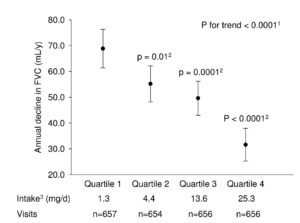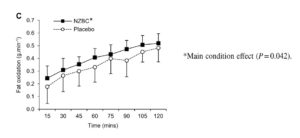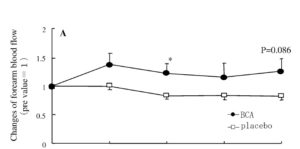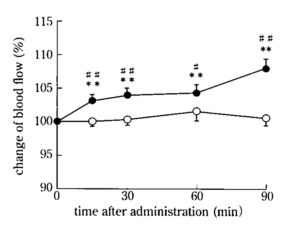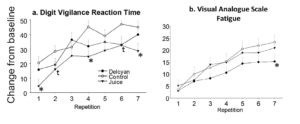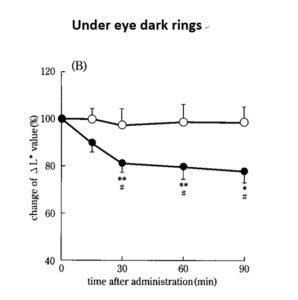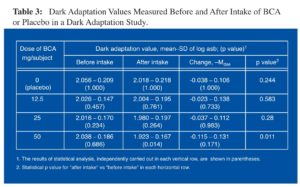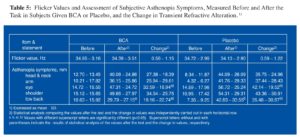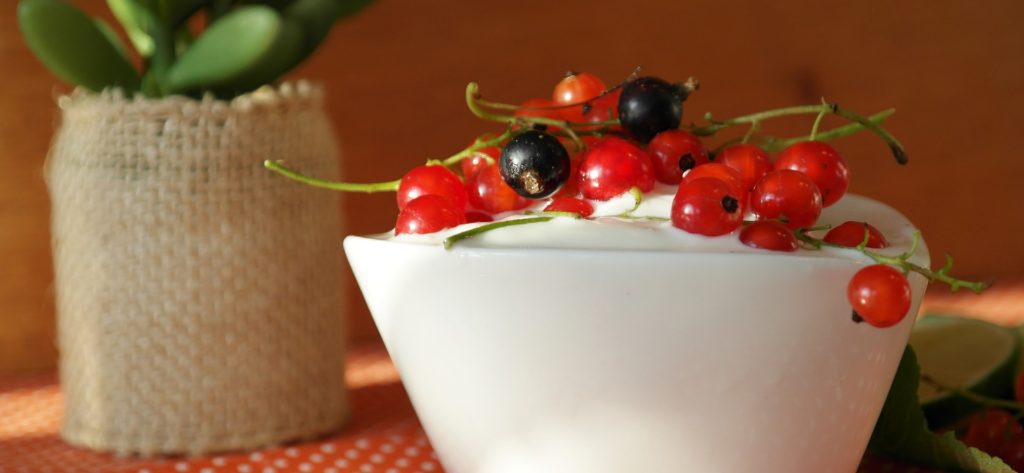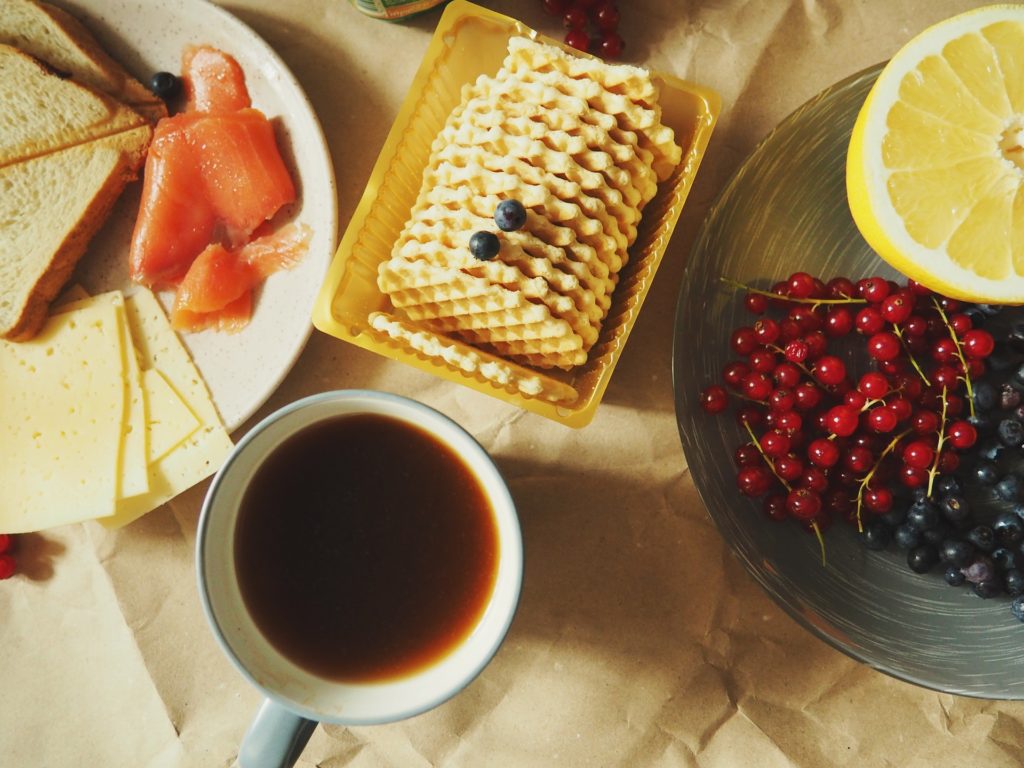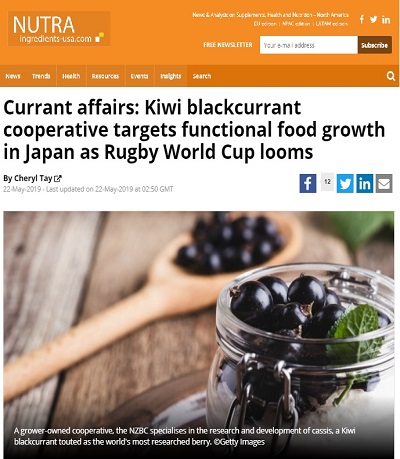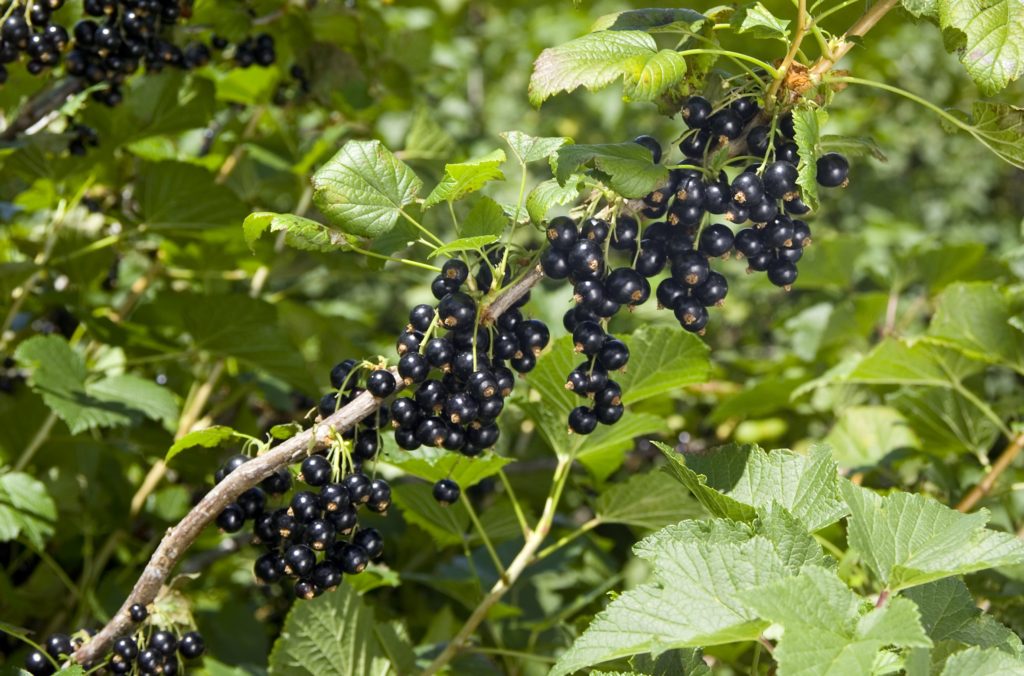Healthy Ageing
New Zealand Blackcurrants – Adapting the body to age well
Summary
- New Zealand Blackcurrant anthocyanins are bioavailable
- Long term consumption of anthocyanins decreases the adverse effects of the diseases of aging
- New Zealand Blackcurrant increases fat metabolism
- New Zealand Blackcurrant improves blood flow
- New Zealand Blackcurrant improves cognitive function
- New Zealand Blackcurrant anthocyanins improve skin appearance
- New Zealand Blackcurrant maintains dark adaption vision and reduces eye fatigue
- New Zealand Blackcurrant maintains healthy gut microbiota
- Nrf-2 has been implicated as a key activator of the body’s natural defense and repair systems helping the body adapt to the stresses of aging
- Blackcurrants activate the adaptive cell signaling molecule nrf-2 in a rodent model
1. New Zealand Blackcurrant anthocyanins are bioavailable
Levels of anthocyanins were elevated in the plasma of volunteers 2 hours after ingestion of New Zealand Blackcurrant extract at doses from 0.8 mg of anthocyanins/kg of body weight (equivalent to 60mg of anthocyanins, or 12 grams of New Zealand Blackcurrants or 11 Blackcurrants, for a person weighing 75kgs).
Source: Hurst RD et al. (2019) Consumption of an Anthocyanin-Rich Extract Made From New Zealand Blackcurrants Prior to Exercise May Assist Recovery From Oxidative Stress and Maintains Circulating Neutrophil Function: A Pilot Study. Front. Nutr. 6:73
2. Long term consumption of anthocyanins decreases the adverse effects of the diseases of aging
a. Slowing down the loss of lung volume that occurs with age
Long term consumption of 25 mg anthocyanins per day more than halved the loss in lung volume that occurs with age, from 70mL per year to 30 mL per year.
Source: Mehta AJ et al (2016) Dietary anthocyanin intake and age related decline in lung function:longitudinal findings from the VA normative Aging Study. Am J Clin Nutr 103:542-550.
b. Decreasing the risk of cardiovascular disease
Consumption of 26 mg anthocyanins per day decreased the age-adjusted risk of myocardial infarction to 0.82 in men, and 0.71 in women.
Source: Cassidy A et al (2016). Habitual intake of anthocyanins and flavones and risk of cardiovascular disease in men. Am J Clin Nutr 104:587-595.
Cassidy A et al (2013). A high anthocyanin intake is associated with a reduced risk of myocardial infarction in young and middle-aged women. Circulation 127:188-196.
c. Decreasing the risk of type 2 diabetes
Consumption of 22 mg of anthocyanins per day decreased the age-adjusted risk of type 2 diabetes to 0.69.
Source: Wedick NM et al (2012). Dietary flavonoid intakes and risk of type 2 diabetes in US men an women. Am J Clin Nutr 95:925-933.
d. Decreasing age related weight gain
For every 10mg of anthocyanin consumed the weight gain over 4 years was 0.5 kgs less.
Source: Bertoia ML et al (2016). Dietary flavonoid intake and weight maintenance: three prospective cohorts of 124 086 US men and women followed for up to 24 years. BMJ 352:117
3. New Zealand Blackcurrant increases fat metabolism
Fat oxidation was significantly increased in women during 120 minutes of moderate cycling after they had consumed 200 mg of New Zealand Blackcurrant anthocyanins per day for 7 days. In a similar study 14 healthy men increased fat oxidation by 26% during 30 minutes of moderate exercise after 7 days consumption of 105mg of blackcurrant anthocyanins per day.
Source: Strauss J et al (2018). New Zealand blackcurrant extract enhances fat oxidation during prolonged cycling in endurance-trained females. European Journal of Applied Physiology
Cook M et al (2015). New Zealand Blackcurrant Extract Improves Cycling Performance and Fat Oxidation in Cyclists. European Journal of Applied Physiology 115:2357.
4. New Zealand Blackcurrant improves blood flow
a. Peripheral limb blood flow
Volunteers who had consumed a single dose of blackcurrant anthocyanins (0.8 mg/per kg of body weight) showed a 22% increase in fore arm blood flow when at rest.
Source: Matsumoto H et al (2005) Effects of blackcurrant anthocyanin intake on peripheral muscle circulation during typing work in humans. Eur J Appl Physiol 94:36-45
b. Facial skin blood flow
Volunteers showed improved facial skin flow 30 minutes after consumption of New Zealand Blackcurrant juice containing 50mg of anthocyanins (closed circles) compared to placebo (open circles).
Source: Matsumoto H et al (2005). Improvement of shade ring under eyes by blackcurrant polyphenol intake. Skin Research 4:492-497
c. Ocular blood flow
Consumption of 50mg of blackcurrant anthocyanins daily for 6 months significantly improved optic nerve and retinal blood flow in glaucoma patients.
Source: Ohguro I et al (2007). Effects of anthocyanins in blackcurrant on retinal blood flow circulation of patients with normal tension glaucoma. A pilot study. Hirosaki Med J. 59:23-32
5. New Zealand Blackcurrant improves cognitive function
Volunteers supplemented with New Zealand blackcurrant juice or blackcurrant extract (Delcyan) containing 500mg of anthocyanins per dose showed a significant affect on reaction time (a) and fatigue (b) while undertaking an attention demanding and mentally fatiguing computerised cognitive assessment compared to a placebo treatment.
Source: Watson A et al (2015). Acute supplementation with blackcurrant extracts modulates cognitive functioning and inhibits monoamine oxidase-B in healthy young adults. Journal of Functional Foods. 17:524-539.
6. New Zealand Blackcurrant anthocyanins improve skin appearance
Volunteers showed decreased intensity of under eye dark rings 30 minutes after consumption of New Zealand Blackcurrant juice containing 50mg of anthocyanins (closed circles) compared to placebo (open circles).
Source: Matsumoto H et al (2005). Improvement of shade ring under eyes by blackcurrant polyphenol intake. Skin Research 4:492-497.
7. New Zealand Blackcurrant maintains dark adaption vision and reduces eye fatigue
8. New Zealand Blackcurrant maintains healthy gut microbiota
Consumption of New Zealand Blackcurrant extract (200mg of anthocyanins per day for 14 days – CAM30, Period 2) increased levels of beneficial bacteria Lactobacillus and Bifidobacterium from baseline (Period 1) that returned to baseline after consumption (Period 3). In parallel levels of pathogenic bacteria Clostridium and Bacteroides decreased over Period 2.
Source: Molan A et al (2014). Evaluation of the effect of blackcurrant products on gut microbiota and on risk for colon cancer in humans. Phytotherapy Research 28:416-422.
9. Nrf-2 has been implicated as a key activator of the body’s natural defense and repair systems helping the body adapt to the stresses of aging
Nrf2 is a key cell signaling molecule that upon activation switches on the synthesis of a range of cellular molecules that improve the cell’s protective and defense status leading to a body that is better adapted to resist the stresses of aging.
Source: Schmidlin CJ et al (2019) Redox regulation by nrf2 in aging and disease. Free Rad Biol Med 134:702-707.
10. Blackcurrants activate the adaptive cell signaling molecule nrf-2 in a rodent model
Rats fed a dose of blackcurrant anthocyanins equivalent to 6 mg of anthocyanins per day for a 75 kg human showed elevated levels of nrf2.
Source: Thoppil RJ et al (2012) Black currant anthocyanins abrogate oxidative stress through Nrf2- mediated antioxidant mechanisms in a rat model of hepatocellular carcinoma Curr Cancer Drug Targets 12:1244-57.


